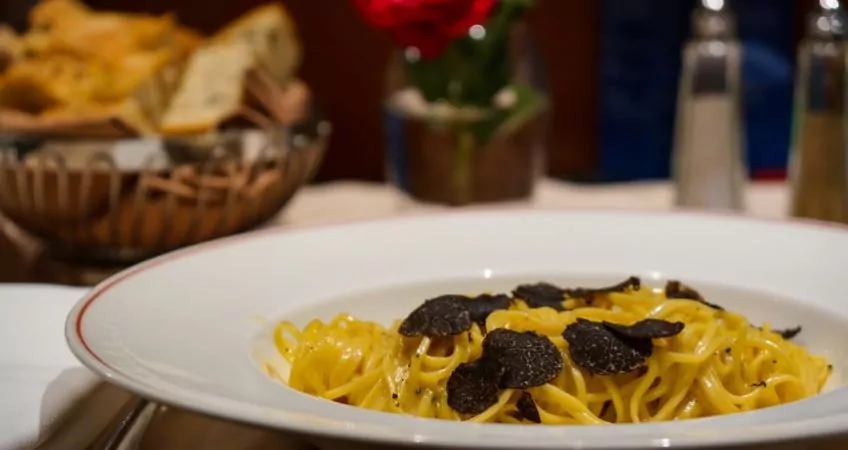
How I Learned The Value Of Truffles And Why I’m Investing
My Newest Ag Recommendation Earns You 16% Per Year
One sunny summer afternoon in 2012 I had the most expensive lunch of my life.
Kathleen, the kids, and I were taking a driving tour through Italy, Austria, and Croatia. The Croatia leg was to check on the old stone house we own in Istria. We arrived in the nearest town, Livade, around lunch time.
Livade is a tiny place with a big claim to fame. This is the center of Croatia’s truffle region. Walking through the lobby of the town’s only restaurant we saw, in a glass case, an enormous truffle—the world’s biggest, according to Guinness (or so the sign attached indicated).
Reviewing the menu, we saw that every item on it featured truffles…
Truffle soup, truffle pasta, truffle sauce on the pork chops…
We observed truffle shavings garnishing every plate that came out from the kitchen, and, after we’d been served, the waiter came around the table to ask us each if we’d like more truffle grated onto our meal for good measure.
The food was excellent, but the bill for the four of us was 350 euros. And we hadn’t had any wine!
I’ve had more expensive dinners out, sure, but those were in fancy city restaurants and included bottles of vino.
I knew of truffles before that lunch… understood that they are expensive… but I didn’t realize how expensive.
Truffles have always been a high-priced delicacy, but the supply and demand curve has made them into one of the world’s most valuable agricultural crops.
In 1903, the global population was 1.2 billion. Annual truffle production was 1,050 tons.
Today, the global population is about 7.7 billion, and annual truffle production ranges from 6 to 60 tons.
What happened?
World War I, to start. It killed off most of the young men who’d been working in the French truffle industry. Industry knowledge was lost, including plantation know-how that was only a couple of decades old at the time.
More recently, drought in Europe has reduced wild truffle production.
The good news is that truffle plantations are making a comeback, but this is not an easy industry to get into successfully. Today, you need science to speed up and improve truffle growth if you want to make a business of it.
Truffles are a fungus that grows underground. Leaving them to develop without help in new plantations would add many years to the growth cycle.
Truffle Opportunity In Spain
That’s why I was excited to discover a truffle plantation in Spain that is backed by serious science. The developer seeds the roots of the trees in his plantation with spores, speeding up truffle growth naturally.
The specific science involved isn’t available to just anyone wanting to start a truffle plantation. These developers have worked with a dedicated lab for years to refine it, and they keep it private and well protected.
Of course, this developer isn’t the only one focused on reviving truffle growth to try to address the enormous lack of global supply (though he is one of only a few with access to the science I mentioned).
But remembering that 60 tons a year of truffles are produced today compared with 1,000 tons in 1903 puts the enormity of the opportunity into perspective.
There’s an awful lot of room for growth in this market. In fact, more than 100 times the current annual production would be needed to reach the same level per population that we had back in 1903.
Meantime, fewer wild truffles are being found every year, and the global population continues to expand.
You can profit from this scarcity by owning your own truffle trees… for as little as US$51,563. That gets you 100 trees in the managed plantation of the developer I’ve spent the past year-and-a-half getting to know.
This is a fully turnkey opportunity… just the kind of agricultural play we like and seek out.
Using a conservative sales price for the truffle harvests of 500 euros per kilogram, the projected IRR for this investment over 30 years is 16%. Cash flow starts in year three, thanks to the science involved, which helps the truffles produce more quickly than they would otherwise, and increases over time.
Truffle demand is only growing, so these projections are likely conservative, but a 16% IRR is nothing to sneeze at.
By way of full disclosure, I’m investing personally.
If you’d like more information and to consider if this could be a fit for your portfolio, get in touch here now.
Lief Simon



